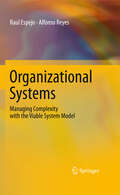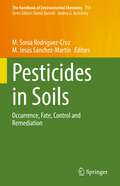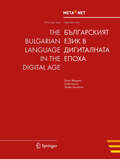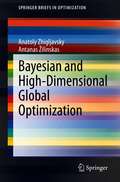- Table View
- List View
Organizational Systems: Managing Complexity with the Viable System Model
by Raul Espejo Alfonso ReyesOrganizational Systems clarifies the application of cybernetic ideas, particularly those of Beer's Viable System Model, to organizational diagnosis and design. Readers learn to appreciate the relevance of seeing the systemic coherence of the world. The book argues that many of the problems we experience today are routed in our practice of fragmenting that needs to be connected as a whole. It offers a method to study and design organizations and a methodology to deal with implementation problems. It is the outcome of many years of working experience with government offices as well as with all kinds of public and private enterprises. At a more detailed level this book offers an in depth discussion of variety engineering that is not available either in the primary or secondary literature.
Pesticides in Soils: Occurrence, Fate, Control and Remediation (The Handbook of Environmental Chemistry #113)
by M. Sonia Rodríguez-Cruz M. Jesús Sánchez-MartínThis book reviews the occurrence and fate of pesticides in soils, their impact on soil quality and soil ecosystems, and it also provides a comprehensive overview of the latest prevention and remediation strategies of soil contamination. Chapters from expert contributors cover topics such as soil pollution monitoring, the role of dissolved organic matter on the environmental fate of pesticides in soils, the effects of pesticides on soil microbial communities, plant uptake of pesticides from soils, and nano-based pesticides. Particular attention is given to the latest physicochemical and biological technologies developed to immobilize or degrade pesticides, preventing soil and water pollution. Given its scope, the book will appeal to researchers, professionals, including environmental chemists, engineers, ecologists, and policy-makers responsible for soil management.
The Bulgarian Language in the Digital Age (White Paper Series #4)
by Georg Rehm Hans UszkoreitThis white paper is part of a series that promotes knowledge about language technology and its potential. It addresses educators, journalists, politicians, language communities and others. The availability and use of language technology in Europe varies between languages. Consequently, the actions that are required to further support research and development of language technologies also differ for each language. The required actions depend on many factors, such as the complexity of a given language and the size of its community. META-NET, a Network of Excellence funded by the European Commission, has conducted an analysis of current language resources and technologies. This analysis focused on the 23 official European languages as well as other important national and regional languages in Europe. The results of this analysis suggest that there are many significant research gaps for each language.A more detailed expert analysis and assessment of the current situation will help maximise the impact of additional research and minimize any risks. META-NET consists of 54 research centres from 33 countries that are working with stakeholders from commercial businesses, government agencies, industry, research organisations, software companies, technology providers and European universities. Together, they are creating a common technology vision while developing a strategic research agenda that shows how language technology applications can address any research gaps by 2020.
Bayesian and High-Dimensional Global Optimization (SpringerBriefs in Optimization)
by Anatoly Zhigljavsky Antanas ŽilinskasAccessible to a variety of readers, this book is of interest to specialists, graduate students and researchers in mathematics, optimization, computer science, operations research, management science, engineering and other applied areas interested in solving optimization problems. Basic principles, potential and boundaries of applicability of stochastic global optimization techniques are examined in this book. A variety of issues that face specialists in global optimization are explored, such as multidimensional spaces which are frequently ignored by researchers. The importance of precise interpretation of the mathematical results in assessments of optimization methods is demonstrated through examples of convergence in probability of random search. Methodological issues concerning construction and applicability of stochastic global optimization methods are discussed, including the one-step optimal average improvement method based on a statistical model of the objective function. A significant portion of this book is devoted to an analysis of high-dimensional global optimization problems and the so-called ‘curse of dimensionality’. An examination of the three different classes of high-dimensional optimization problems, the geometry of high-dimensional balls and cubes, very slow convergence of global random search algorithms in large-dimensional problems , and poor uniformity of the uniformly distributed sequences of points are included in this book.



